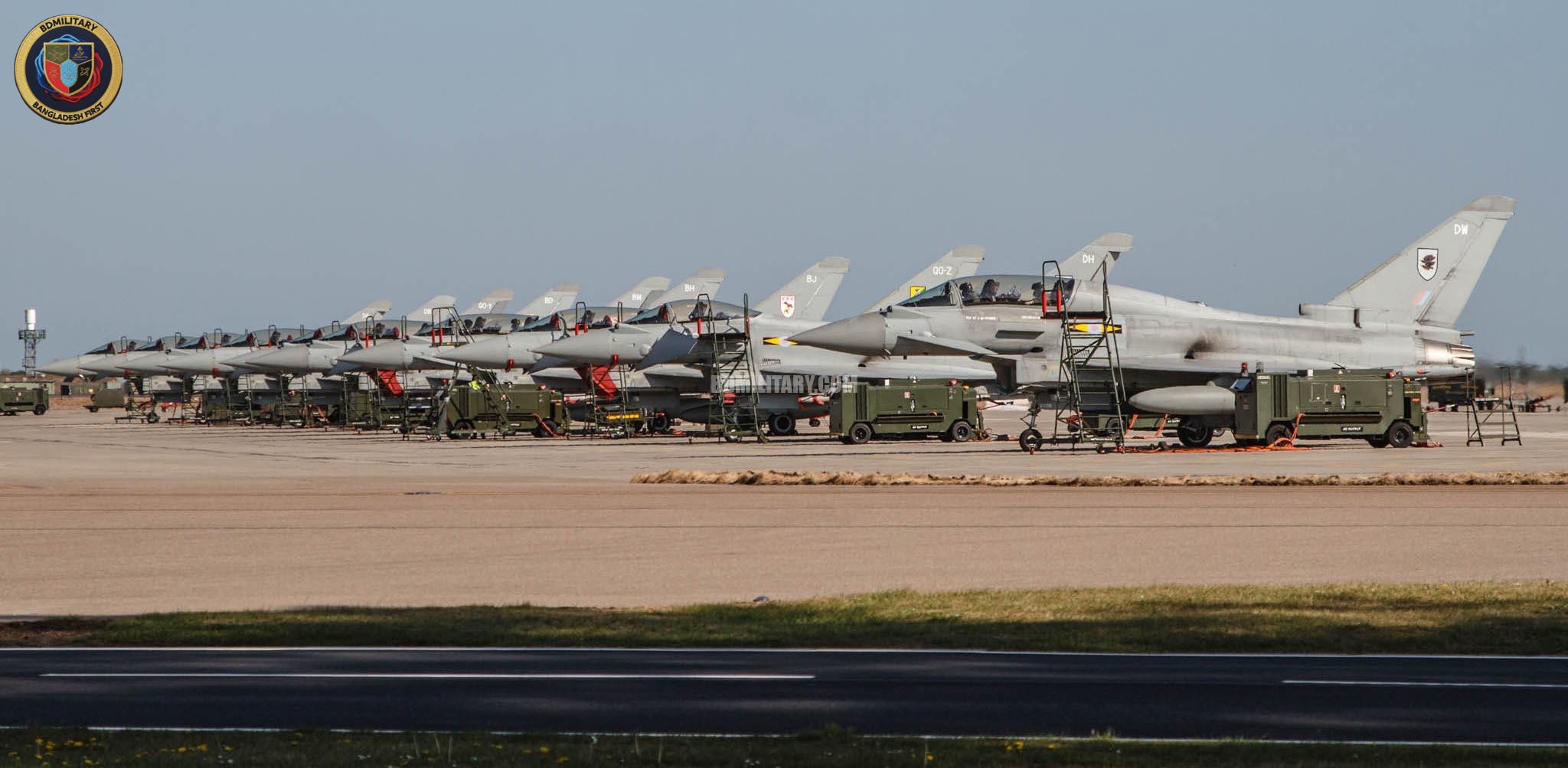Bangladesh’s evolving foreign and defence policies reflect an unmistakable strategic reality: Dhaka’s national interests are increasingly aligned with the West, not with Russia or India. While India remains a conventional military threat along the border and the Russian Federation continues to arm both New Delhi and Myanmar’s junta, Bangladesh’s strategic calculus has shifted decisively toward building a Western-compatible defence posture — one that ensures operational independence, deterrence, and access to modern technology.
The emergence of the United States, the United Kingdom, France, Italy, Germany, and Türkiye as key partners marks a fundamental reorientation of Bangladesh’s long-term security architecture. No longer content with being a passive consumer of outdated Eastern bloc weaponry, Dhaka is signalling that its armed forces — Army, Navy, and Air Force — must now transition to NATO-standard systems that guarantee reliability, interoperability, and sustainability for decades to come.
Russia’s Double Game: Arming Bangladesh’s Adversaries
For decades, Russia played a prominent role in Bangladesh’s defence modernisation, supplying MiG-29 fighters, Yak-130 trainers, and Mi-17 helicopters. However, Moscow’s policies in the past decade have starkly undermined Bangladesh’s strategic interests. Russia remains the largest arms supplier to India, providing Su-30MKI fighters, T-90 tanks, S-400 air defence systems, and the jointly developed BrahMos missile — a supersonic cruise missile with offensive range against Bangladesh’s heartland.
Simultaneously, Russia continues to supply weapons to Myanmar’s military junta, including Yak-130 attack trainers, Mi-35 gunships, Pantsir-S1 air defence systems, and 9K38 Igla MANPADS. Many of these systems were used directly against civilian populations in Rakhine and Chin States, displacing refugees into Bangladesh and exacerbating regional instability.
Given that both India and Myanmar represent direct or potential military threats, Bangladesh’s continued reliance on Russian military hardware would effectively mean subsidising the very country that enables its adversaries. As a result, Bangladesh has virtually halted all new purchases of Russian-origin equipment, opting instead to pursue Western and Turkish systems with greater technological transparency and political neutrality.
The Western Connection: Expanding Defence Engagement
Over the past five years, Bangladesh has seen a steady rise in diplomatic and security interactions with Western powers. Defence dialogues with the United States, United Kingdom, France, Italy, and Germany have intensified, with concrete proposals for co-production, technology transfer, and strategic agreements now under negotiation.
The General Security of Military Information Agreement (GSOMIA) and the Acquisition and Cross-Servicing Agreement (ACSA) with the United States represent two critical frameworks in this transformation. These agreements — long prerequisites for deeper defence cooperation — would allow Bangladesh to access encrypted communications, shared intelligence, and logistical interoperability with US and NATO forces. GSOMIA would enable confidential data sharing vital for joint operations, while ACSA would simplify supply and maintenance support in times of crisis or peacekeeping deployment.
In parallel, the United Kingdom has expressed interest in expanding defence collaboration through training programmes, officer exchanges, and potential hardware offers under the Defence Capability Programme. British aerospace and maritime sectors — particularly BAE Systems — have signalled openness to supporting Bangladesh’s naval modernisation and air defence upgrades.
France, traditionally a major partner in Bangladesh’s civil aviation sector, has now extended its interest to military domains. The Dassault Aviation and Naval Group outreach, combined with Thales’ continuing role in radar and fire-control systems, reflects Paris’s intent to deepen strategic ties with Dhaka. Meanwhile, Italy’s Leonardo and Germany’s ThyssenKrupp Marine Systems (TKMS) are positioning themselves for future contracts involving coastal surveillance systems, submarines, helicopters, and naval engineering collaboration.
Türkiye: The Bridge Between East and West
If Western Europe represents the technology source, Türkiye is the conduit for operational and doctrinal transition. As a NATO member with a proven record of indigenous defence production and global export success, Ankara has emerged as Dhaka’s most effective partner for Westernisation of its armed forces.
Bangladesh’s induction of the Bayraktar TB2 UAV and TRG-230 GMLRS systems symbolises this shift. Both platforms are NATO-compatible, digitally integrated, and combat-proven. Turkish systems have provided Bangladesh not only modern hardware but also a technological and doctrinal bridge towards Western standards — especially in command, control, and targeting networks.
Further negotiations with Türkiye include potential acquisition of ATMACA anti-ship missiles, Hisar-O+ medium-range air defence systems, and advanced UAV variants. Turkish assistance has also extended to training and doctrine development, providing Bangladesh with a template for indigenous research and production under Western quality frameworks.
Ankara’s strategic autonomy and its ability to maintain relations with both NATO and non-aligned partners make it an ideal intermediary for Bangladesh’s gradual integration into Western supply chains without compromising national sovereignty.
Shifting Military Doctrine: From Regional Defence to Strategic Deterrence
Bangladesh’s defence transformation is not just about equipment; it represents a doctrinal evolution. Historically focused on territorial defence, Dhaka’s military thinking has evolved to recognise India’s persistent threat posture — ranging from forward deployments and joint military exercises targeting Bangladesh’s periphery to extensive intelligence operations and psychological warfare.
This has prompted the Bangladesh Armed Forces to invest in long-range precision strike capabilities, integrated air defence, and enhanced maritime domain awareness. Western and Turkish partnerships are central to these efforts, offering access to advanced sensors, surveillance systems, and data-linked command infrastructure that are unavailable from Eastern suppliers.
In parallel, Bangladesh’s engagement in UN peacekeeping operations has driven its requirement for NATO-compatible logistics and communication systems. Standardisation under NATO frameworks not only improves global interoperability but also ensures the Armed Forces can operate effectively under modern joint-force conditions.
The Strategic Isolation of India and Myanmar
India’s regional posture has long been defined by coercion and asymmetry. Its expansive defence budget, aggressive border infrastructure build-up, and attempts to dominate South Asian waterways leave little doubt about its strategic intent. For Bangladesh, the challenge lies in deterring this threat through credible defence capability rather than political rhetoric.
In this regard, Western partnerships are not symbolic but structural. Access to modern Western ISR (Intelligence, Surveillance, Reconnaissance), C4ISR integration, and precision munitions would neutralise India’s numerical advantage. The Western systems’ modularity and reliability far exceed the outdated Soviet-era platforms used by India’s immediate rivals, making them ideal for Bangladesh’s emerging doctrine of “smart deterrence.”
On the other front, the Myanmar regime’s militarisation — actively supplied by Russia and China — poses a growing asymmetric risk. The junta’s Yak-130s, Su-30 fighters, and Russian surface-to-air systems directly threaten Bangladesh’s south-eastern airspace. Western alignment not only enhances deterrence but also strengthens Dhaka’s diplomatic position by linking its security interests to international stability and human rights commitments.
Industrial Implications: From Procurement to Partnership
A Western-oriented defence posture necessitates domestic industrial growth. Bangladesh’s state-owned and private defence enterprises are already expanding their technical base through joint ventures and licensed production.
Collaborations with Turkish and Western manufacturers can accelerate technology transfer in areas such as electronics, optics, and modular munitions. Dhaka’s long-term goal — to establish a Bangladesh Defence Economic Zone (BDEZ) — is consistent with Western interest in low-cost manufacturing hubs capable of servicing regional peacekeeping logistics and maintenance needs.
By pivoting toward NATO-standard production lines, Bangladesh would not only modernise its own forces but also create a regional supply base for future export. Western defence industries have already recognised Bangladesh’s strategic location at the Bay of Bengal as ideal for supporting Indo-Pacific logistics and maintenance operations.
The Way Forward
Bangladesh’s interests now lie decisively with the Western world. The United States and its NATO allies represent the only viable source of sustained technological advancement, training expertise, and defence financing mechanisms that align with Dhaka’s long-term vision of strategic autonomy.
To consolidate this direction, Bangladesh must expedite the signing of GSOMIA and ACSA, ensuring access to high-grade encryption, secure communication systems, and shared intelligence infrastructure. These frameworks would significantly enhance operational readiness and resilience against cyber and electronic warfare threats — areas where India continues to invest heavily.
Concurrently, Bangladesh should expand cooperation with the UK and France in maritime domain awareness, leveraging British experience in naval design and French expertise in electronic warfare. The establishment of permanent liaison missions between Bangladesh’s armed services and key Western commands — particularly CENTCOM and AFRICOM — would institutionalise knowledge exchange and crisis coordination.
At the industrial level, the government should prioritise joint manufacturing ventures with Türkiye, Italy, and Germany for defence electronics, vehicle platforms, and missile systems. This would reduce dependency on external suppliers while embedding Western standards in Bangladesh’s production infrastructure.
Diplomatically, Dhaka must continue to advocate for a free, stable, and multipolar Indo-Pacific. The Bay of Bengal’s security is inseparable from the collective defence architecture of the region — and Bangladesh, as its geographic centrepiece, can no longer remain on the sidelines. By anchoring its security partnerships in Western values of rule-based order and strategic balance, Bangladesh ensures both national survival and regional relevance.
Conclusion
The era of Russian dependency and Indian intimidation is drawing to a close. Bangladesh’s future lies in a confident, Western-aligned defence structure capable of deterring threats, maintaining sovereignty, and projecting stability across the Bay of Bengal.
As the Armed Forces modernise through NATO-compatible systems and Western partnerships, Dhaka is sending a clear message to both allies and adversaries: Bangladesh will no longer tolerate strategic imbalance in its neighbourhood. It will defend its independence — technologically, militarily, and ideologically — alongside partners who respect its sovereignty and share its vision for a secure and self-reliant future.

Amir Erez is a mission-driven OSINT Data Analyst specialising in defence and security intelligence, with deep expertise in open-source intelligence gathering, multilingual media analysis, and threat monitoring. Leveraging advanced data analytics, geospatial tools, and social media intelligence (SOCMINT), he delivers timely insights on emerging threats and real-time developments across South Asia and the Middle East/North Africa. Amir holds a Master’s degree in Strategic Studies from the Department of Military Science at Stellenbosch University, South Africa, blending academic rigour with operational insight to support defence and national security decision-making.


